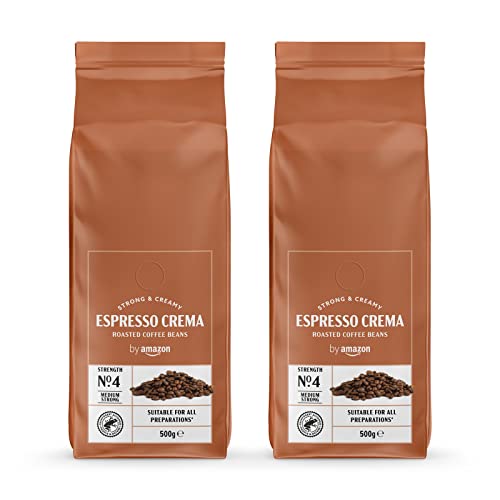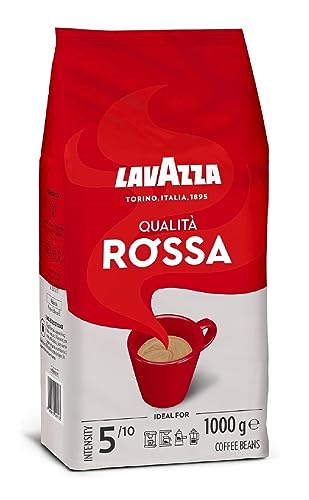9 Lessons Your Parents Teach You About 1 Kg Coffee Beans
페이지 정보
작성자 Jeana 작성일24-07-24 03:32 조회7회 댓글0건관련링크
본문
 Why Buy Whole Coffee Beans in 1kg Bags?
Why Buy Whole Coffee Beans in 1kg Bags?A kilogram of coffee 1kg beans will make around 142 single-serve cups. This assumes that there are no spills or waste.
A tablespoon of beans in their whole form contains about 7 grams. However, when ground, a tablespoon could contain more or less. This is due to variations in size and density.
Cost
Coffee beans are becoming increasingly important as more coffee drinkers realize the benefits of brewing an excellent cup of coffee at home. It is recommended to buy 1kg coffee beans fresh, high-quality, whole coffee beans in bags of 1kg. This will satisfy your taste buds and also your pocket. 1kg of beans can produce between 55 and 100 cups of coffee based on the strength you prefer to your brew.
The cost of a kilo of coffee beans is influenced by various factors, including transport and processing costs. These fees, which may appear to be small at first but can quickly become costly and have a significant effect on the cost of coffee beans. The cost of a 1 kg coffee Beans (http://feiradorolomogi.com.br/Classificados/author/auroralesch/) of coffee beans can also increase if the roasting process is interrupted or if the bean quality is not satisfactory.
Apart from these costs aside from these, there are many other indirect expenses that coffee farmers must consider when planning a budget for their harvests. These expenses include export taxes, the contribucion-cafetera tax charged by FNC, and port fees. Some importers charge additional administrative and management fees, which are quite high.
The cost of roasting coffee is another factor that can influence the price of a kilogram of coffee beans. Retail prices for coffee beans are dependent on the price of green coffee and can be very different. The price of the green coffee also depends on the country and region where it is produced.
You must also consider any coffee waste that comes from roasting or processing when calculating the cost per kilogram of beans. Coffee waste from the grinder plates, for instance, can reduce the weight. This makes the final calculation of how many servings per kg of coffee beans can produce more precise.
The type of roasting is also crucial in determining the number of cups of coffee a kilogram of beans will yield. A light roast gives a delicate and sweet flavor while a dark roast has a more intense and fruity taste. The amount of coffee that can be produced by a kilo of coffee beans will also depend on the brewing method used for brewing, like espresso or filter.
Environment
Coffee beans are produced in a setting that is affected by a variety of environmental issues. Some of them include deforestation, soil erosion, and water pollution. Certain large coffee companies have taken steps to lessen their environmental impact, however there's still a lot of work to be completed. This includes encouraging sustainable farming practices and providing financial assistance to initiatives to protect the environment.
Numerous studies have studied the effects of climate change on the production of coffee. They have discovered that the climate has a significant impact on the quality and yield of coffee beans. The effect of climate changes on coffee production depends on the type of coffee and the farming techniques employed. For instance the beans grown by farmers who cultivate their plants in shade have more acidity, aroma, and typicity compared to those grown in the sun. Agroforestry practices also produce beans with better taste, aroma, as well as acidity.
The use of excessive amounts of chemicals is a major problem in the production of coffee. In addition to the negative effects of these chemicals on people and the environment, they also pollute water sources. This is particularly relevant to non-organic coffee, which uses a lot of synthetic pesticides and fertilizers. The excess chemicals are absorbed into the water and disrupt ecosystems, which can affect wildlife and humans.
In addition to these worries in addition to these issues, the high cost of producing coffee can make it unaffordable for many families. A lack of consistent rain can also have a negative impact on the harvest. The conditions for growing coffee are very specific and a lack of rain could cause a less productive harvest.
In addition to these problems Climate change will significantly impact the ability of land to be used for coffee production. According to research, an increase in the number of suitable land will occur, as well as an increase in the area that is not suitable in the majority of coffee-producing countries. This will cause conflicts between coffee production and nature conservation. This will also reduce the amount of ecosystem services offered by regions that grow coffee including providing support and regulation.
Experimentation
Coffee beans are a versatile food that can be consumed in a variety ways. The bitterness of coffee beans can be diminished by using the right ingredients. They can be used to make coffee, or as an ingredient in baked goods. You can also add them into desserts to give them the texture and flavor. Coffee beans are also an excellent source of antioxidants that can be incorporated into many recipes that promote health.
The flavor of coffee differs according to the region in which it is grown, and its particular characteristics are affected by climate, elevation, and soil quality. Additionally the techniques employed to prepare the beans can alter the taste. For example, honey processed coffees tend to have a sweeter, fruitier taste than conventionally-processed coffees. These kinds of coffees are becoming popular among consumers. They also come at a lower price than traditional coffees. However they are more difficult to produce and require more ability from the farmer.
Coffee is rich in phenolic compounds, which are powerful antioxidants. One of the most important phenolic compounds are chlorogenic acids. They are created through esterification of quinic acid, as well as one or more trans-cinnamic acid. It has been proven that coffee can prevent and inhibit oxidative damages, as well reduce the production inflammatory mediators.
Infusion is among the most popular ways to prepare coffee. There are a myriad of flavors to try. These can range from traditional, like chocolate or cinnamon, to more exotic flavors like lemon, orange and ginger. Some of these flavors come from the coffee beans themselves, while others are added during roasting.
Another method to test the taste of coffee is to brew it using various methods. You can try experimenting using a more coarse grind to make a stronger brew or make it stronger by brewing it at an elevated temperature. These experiments can help you identify your preferred brewing style.
Another interesting experiment using coffee is to sprinkle the grounds on the soil of a potted plant to examine how it affects the growth. Several similar experiments have been conducted, and the majority of the time, the plants that received ground coffee grew more quickly than those that did not.
Taste
The taste of coffee is an individual preference. The best way to discover the most flavorful coffee is to experiment with different grind sizes, brewing techniques or even blending coffee. When you buy by the kilo, you have more flexibility to experiment, which could create a more pleasant experience for your senses. It's also more cost-effective in the long term, since buying by the kilo decreases packaging waste. The coffee grounds that are the byproduct of your daily brew can be composted. Buying in bulk is a greener alternative.
If you're new to espresso, it's likely that you'll need to go through several 250g bags to figure out how you can get the extraction right. This isn't a rare situation, and is a crucial part of learning. Purchasing by the kilo will give you enough beans to help you through this stage and perhaps even to help you make the leap to other brewing methods after you've learned the basics.
The kilo size is cheaper than purchasing smaller bags because you'll save money on the costs of packaging and delivery. If you purchase by the kilo, it can also reduce your carbon footprint. This is due to the fact that you use less bags, and less sealing and degassing strips than if you bought one or two 250g-bags at one time. The smaller number of bags used will also contribute to less garbage in landfills.
A kilo purchase allows you to try out different roasts and flavors that are a wonderful experience for those who love coffee. There are roasters and vendors who offer discounts on larger purchases. Furthermore, you can shop online and have your freshly roasted beans delivered to your doorstep, which is a great option for busy people.
You can also pick an espresso package that includes an tamper pad. This will help you achieve the consistency and precision you require to make a great espresso shot. This tamper mat is manufactured of high-quality materials and is incredibly durable. It has a non-slip surface that minimizes noise and ensures the correct amount of pressure on the beans.

댓글목록
등록된 댓글이 없습니다.

